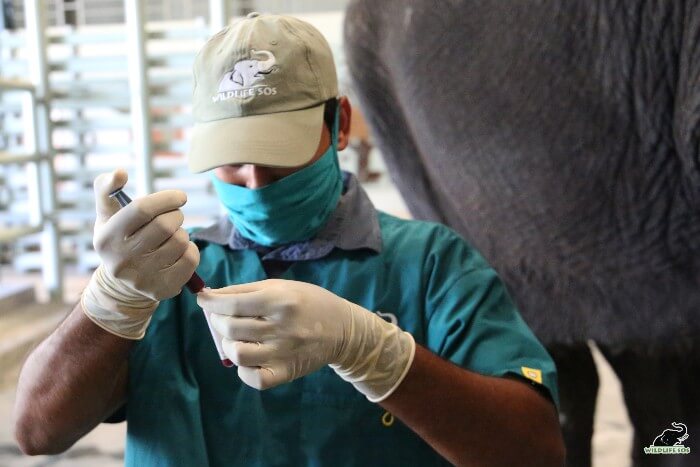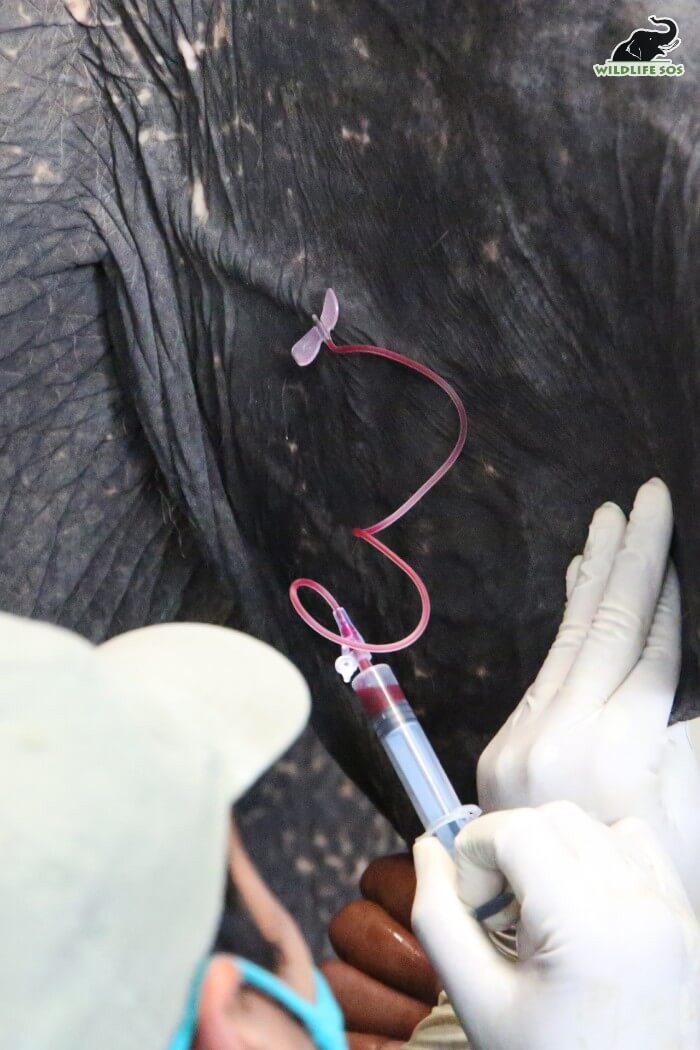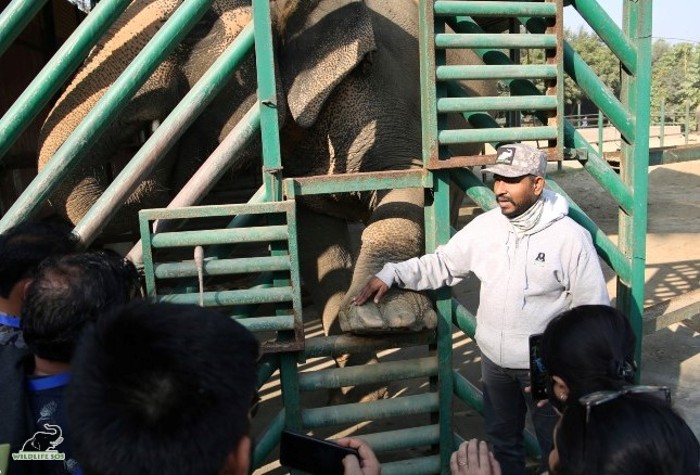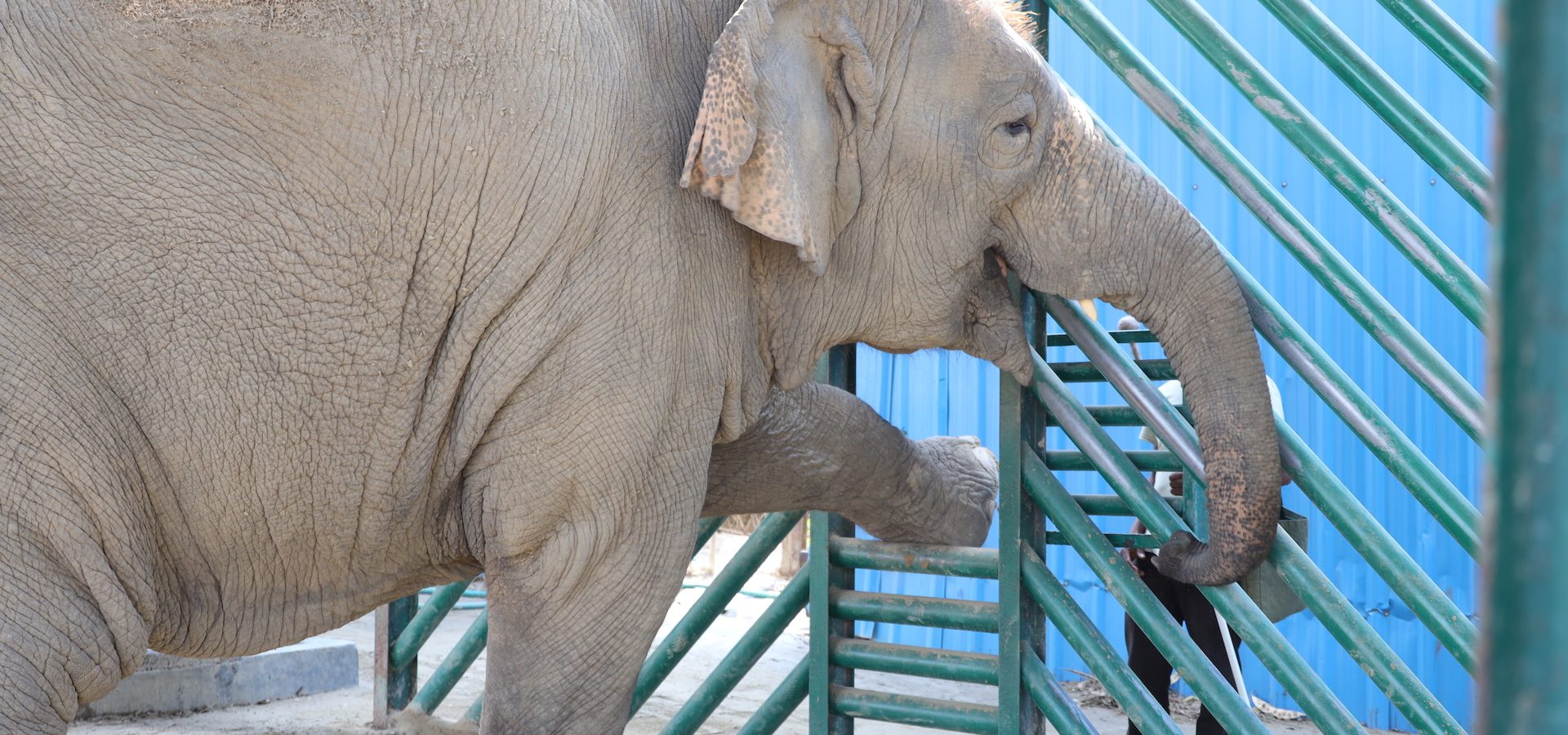Rescuing elephants captured in the tourism and entertainment industry forms an integral part of the work Wildlife SOS does as an organization. Once rescued, our elephants are given high-quality medical care to recover from the years of abuse inflicted on their bodies. An integral and fascinating aspect of providing elephants with the medical care they need is conducting blood draws! This routine test gives us a big picture of the pachyderm’s health and enables us to heal them from the inside out.
A blood draw is essentially done to check normal blood parameters. These parameters are distinguished into two kinds, the first being hematological and the second being cytological. The first parameter, hematological, involves a Complete Blood Count (CBC) focusing on several components and features of your blood. The second parameter, cytological, focuses on a blood biochemical test that assesses kidney function, liver function, and other mineral levels such as calcium phosphorus, protein levels, and so on.

The blood draw reveals numerous details that can be useful for a veterinarian to chart an elephant’s medical plan. For example, elephants that are malnourished usually have discrepancies in parameters that relate to the kidney or liver. To give another example, an elephant suffering from prolonged kidney dysfunction can display elevated levels of an acid or substance supposed to be filtered out by the kidney, indicating the kidney is dysfunctional. Through the results of this blood draw, our veterinarians can begin elephants on any needed medicines or supplements. They even use the result of the blood draw to curate a specialized diet plan for an elephant.

Blood tests for our elephants are conducted every three months. This helps keep a check on their health and allows our veterinarians to track progress and assess the efficacy of a certain treatment. Yet, drawing blood from the giants of the earth is as formidable of a task as it sounds! Blood is usually taken from the ear of an elephant which allows easy access to its nerves. An elephant, however, does not naturally stand still allowing a human to draw blood from its ears. Especially for rescued elephants who are still reeling from years of torture, performing a blood draw might make them anxious and agitated. This puts the veterinarian and caregiver at risk of being injured during blood draws.
Over the years, the Wildlife SOS veterinary experts have aced a way to conduct blood draws in a safe and stress-free manner. The first and foremost step taken to make blood draws easier is the installation of a Protected Contact wall in every elephant enclosure. This wall is designed to ensure safe interaction between the elephant and its caregiver or veterinarian. There are ports or openings that let the veterinary doctors conduct blood draws, apply medication, and examine wounds without agitating the elephants.

The second technique used to make blood draws a smooth process is a practice called “target training” which is incorporated into an elephant’s routine. Target training relies on the principle of positive reinforcement wherein an elephant is rewarded with treats every time it performs a desired action. In the case of blood draws, an elephant is taught to stand still and place its ear on an opening in the protective wall. As it does this it is treated to some peanuts or fruits by the caregiver while a veterinarian quickly draws the blood! Of course, there are times when an elephant is not as cooperative, and in such cases we simply let them munch on the delicious treats while revisiting the procedure the following day to avoid stressing them out.
Through such innovative methods, blood draws have become a mundane part of life at Wildlife SOS!





